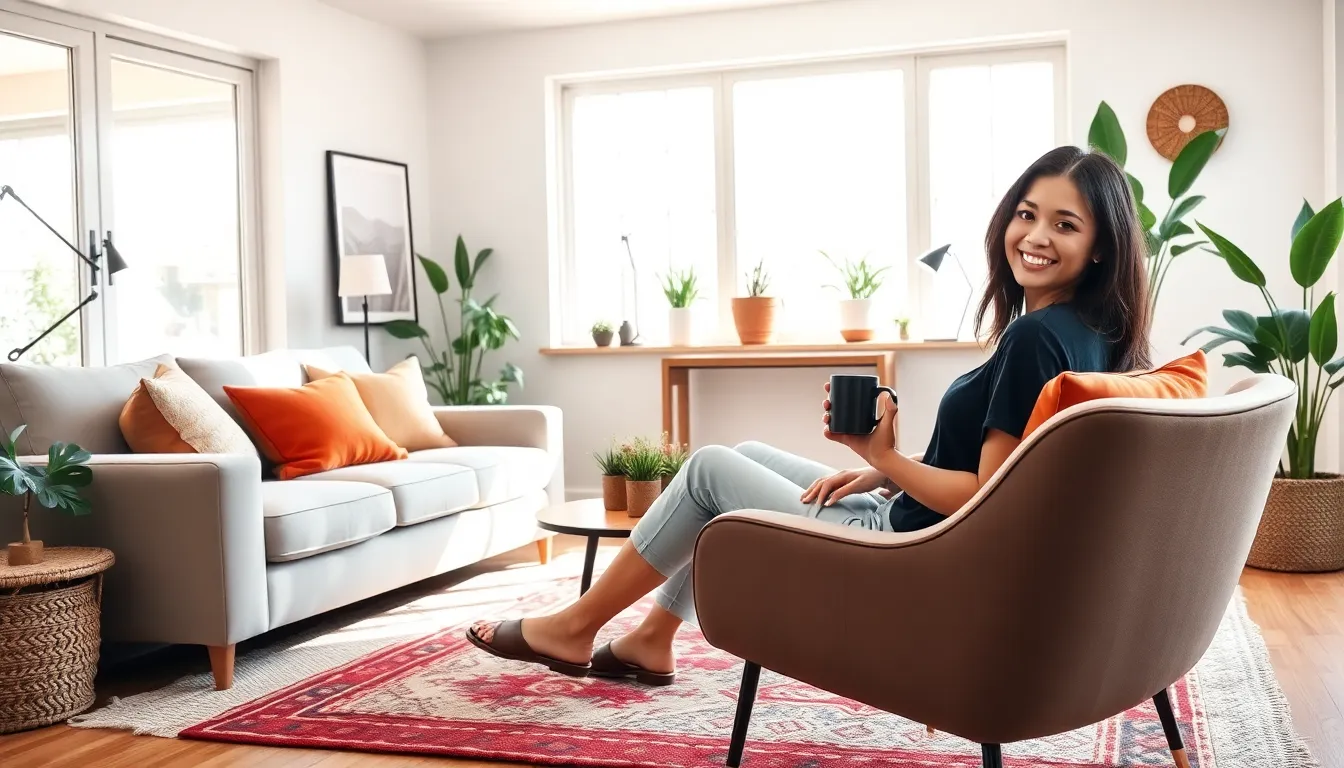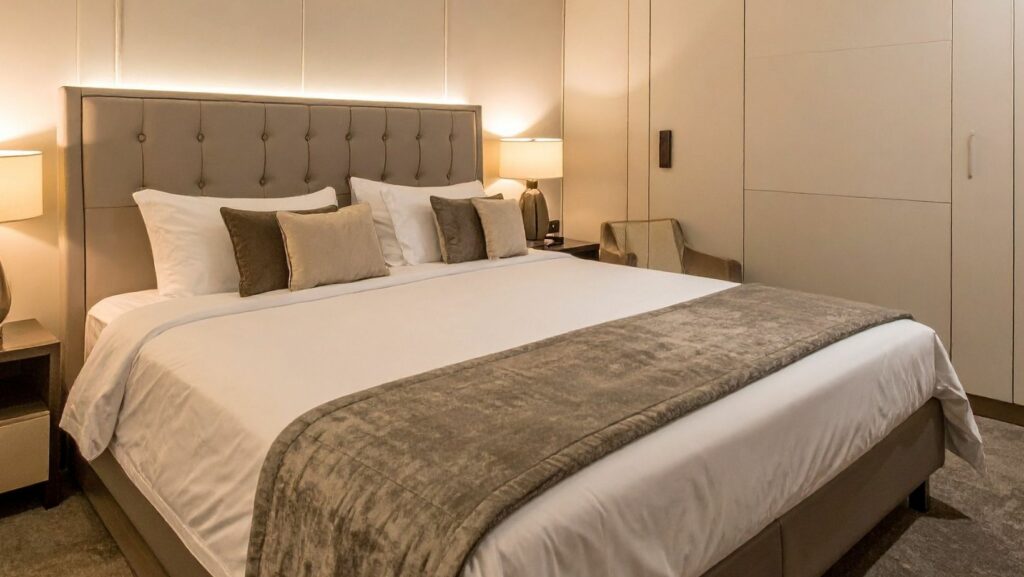Have you ever wondered how to instantly refresh a room without buying new furniture? Are you looking for a practical way to protect your sofas and chairs while keeping your home stylish? Slipcovers might be the perfect solution. Once seen as purely functional, slipcovers have now become a key element in modern home design, combining practicality, versatility, and aesthetic appeal. From minimalist apartments to family-friendly homes, they offer a simple way to update interiors and protect valuable furniture.
A Blend of Style and Function
Slipcovers offer a unique combination of style and function. In the past, homeowners often used them solely to protect furniture from spills and wear. Today, designers and homeowners alike appreciate slipcovers as versatile style tools. Available in a wide array of fabrics, colors, and patterns, slipcovers can completely change the look of a room without the expense of replacing furniture. For instance, a neutral-colored sofa can be instantly transformed into a bold statement piece with a vibrant slipcover, allowing homeowners to experiment with seasonal trends or personal tastes.
Beyond aesthetics, slipcovers provide practical benefits. They protect upholstery from daily wear and tear, extend the lifespan of furniture, and make cleaning significantly easier. For homes with children, pets, or frequent guests, a high-quality slipcover can be a lifesaver, offering peace of mind without compromising style. Many homeowners also use chair slipcovers to give dining or accent chairs a fresh look, enhancing the overall cohesion of a room.
Eco-Friendly and Cost-Effective Design
Modern homeowners are increasingly conscious of sustainability and budgeting. Slipcovers align perfectly with these priorities. Instead of discarding furniture due to minor stains, outdated fabric, or changing tastes, slipcovers allow homeowners to refresh and repurpose existing pieces. This approach not only reduces waste but also minimizes the carbon footprint associated with manufacturing and transporting new furniture.
Financially, slipcovers offer a cost-effective alternative to investing in new furniture. A high-end sofa can be expensive, but slipcovers provide an affordable way to breathe new life into it. Homeowners can purchase different covers to suit seasons or evolving design trends, ensuring that their space remains current without overspending. In this sense, slipcovers are an investment in both style and longevity, proving that chic and practical solutions can coexist.

Customization and Versatility
One of the greatest appeals of slipcovers is their versatility. Many contemporary slipcovers are tailored to fit specific furniture models, ensuring a polished, seamless appearance. However, there are also stretchy and adjustable options that work with a range of furniture shapes and sizes. This flexibility makes slipcovers ideal for renters or homeowners who frequently update their interiors.
The design possibilities are virtually limitless. Slipcovers can be used to introduce bold patterns into a neutral room, unify mismatched furniture, or add texture for a layered look. They are not limited to sofas and chairs; ottomans, dining chairs, and even headboards can be dressed with slipcovers, creating cohesion and continuity throughout the home. By simply changing a slipcover, a room can transition from casual to elegant, or from playful to sophisticated, without the need for a full renovation.
Slipcovers for Family-Friendly Living
Families have embraced slipcovers for their unmatched practicality. Children’s activities, pets, and everyday messes often make it challenging to keep furniture looking pristine. Slipcovers provide a protective barrier, making spills and stains easier to manage. Many fabrics are machine-washable, allowing for effortless cleaning and maintenance.
Additionally, slipcovers promote longevity for valuable furniture. Instead of replacing sofas or chairs prematurely, homeowners can rely on slipcovers to absorb the wear and tear of daily life. This practicality makes slipcovers especially appealing in households where furniture is not only a design element but also a functional component of busy family living.
Reinventing Spaces With Minimal Effort
The ability to reinvent a space with minimal effort is a hallmark of modern design, and slipcovers excel in this area. Homeowners no longer need to invest in expensive makeovers to achieve a fresh look. A single slipcover can transform a tired sofa into a centerpiece of the room. Designers often recommend mixing and matching textures, patterns, and colors to create dynamic, eye-catching interiors.
For example, a soft linen slipcover can evoke a relaxed, coastal vibe, while a velvet option can bring a sense of luxury and sophistication. Seasonal updates are also simple: summer’s bright, airy tones can be swapped for winter’s rich, warm hues. This flexibility enables homeowners to keep their interiors feeling fresh and relevant without committing to permanent changes.
Bridging the Gap Between Traditional and Modern Aesthetics
Slipcovers are also valued for their ability to bridge traditional and modern aesthetics. Many contemporary designs integrate classic elements with minimalist or modern touches, and slipcovers can help facilitate this blending. A traditional sofa with ornate details can be modernized with a sleek, neutral slipcover, while a contemporary piece can gain warmth and texture with a patterned or textured fabric.
This adaptability makes slipcovers an excellent tool for eclectic design schemes, where mixing old and new elements can be challenging. By choosing slipcovers thoughtfully, homeowners can maintain harmony in their interiors, ensuring that furniture complements rather than conflicts with the overall aesthetic.
Sustainability and Material Choices
Modern slipcovers are available in a variety of sustainable materials, reflecting a growing emphasis on environmentally conscious design. Organic cotton, linen, bamboo blends, and recycled fabrics are increasingly common, allowing homeowners to make eco-friendly choices without sacrificing style. Additionally, high-quality synthetic fabrics are often engineered for durability, stain resistance, and comfort, balancing performance with aesthetic appeal.
These material choices reflect broader trends in sustainable home design, where every element—from furniture to textiles—can contribute to a more responsible and thoughtful living environment. Slipcovers, in this context, are not just a design accessory but also a sustainable solution that aligns with modern lifestyle values.
Conclusion
The resurgence of slipcovers in home design highlights a shift toward practical, flexible, and stylish living. They offer a cost-effective and sustainable alternative to replacing furniture, while providing endless opportunities for customization and aesthetic experimentation. Whether for family-friendly protection, seasonal updates, or bridging design styles, slipcovers have proven that they are far more than functional covers—they are transformative design tools.
In the modern home, where versatility, style, and sustainability are increasingly valued, slipcovers hold a unique appeal. They allow homeowners to protect their investments, experiment with decor, and adapt to changing needs, all while maintaining a polished and inviting interior. Far from being a relic of the past, slipcovers have established themselves as a contemporary solution for thoughtful, stylish, and practical home design.

